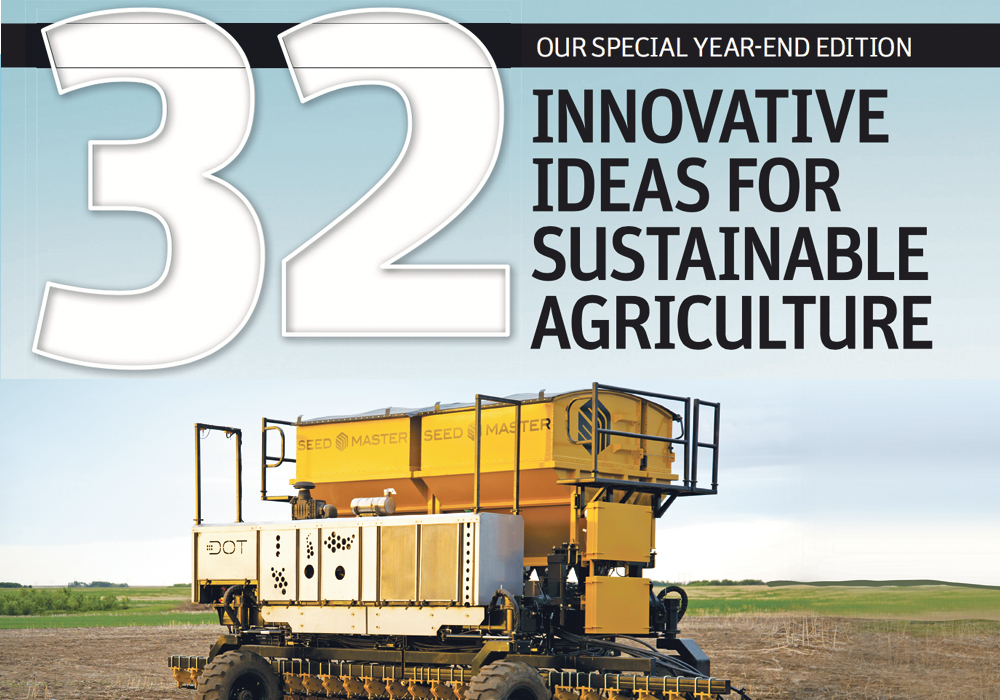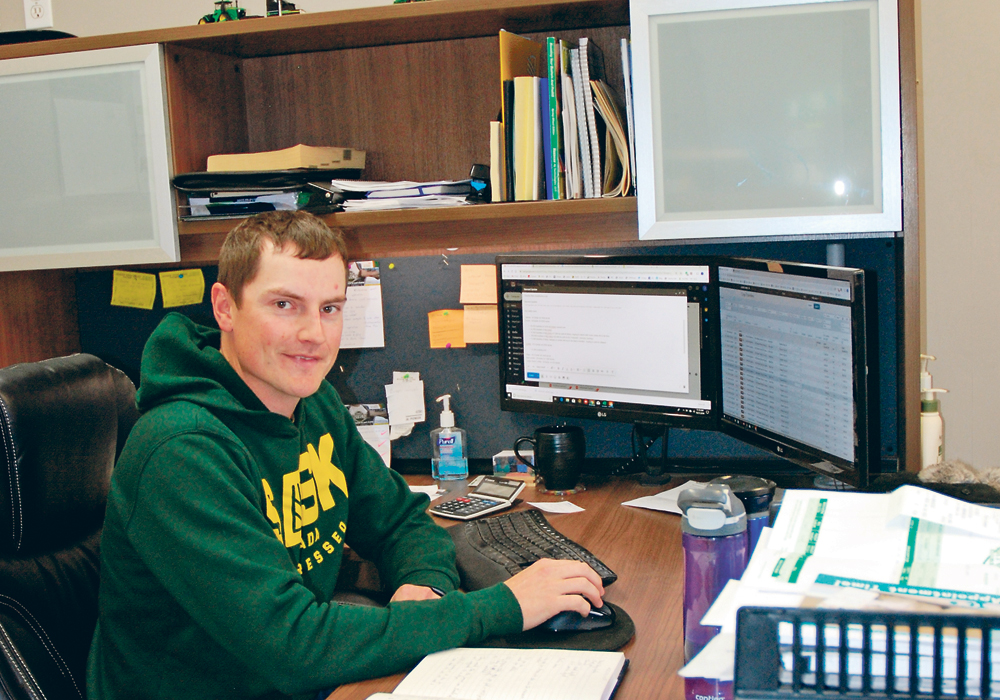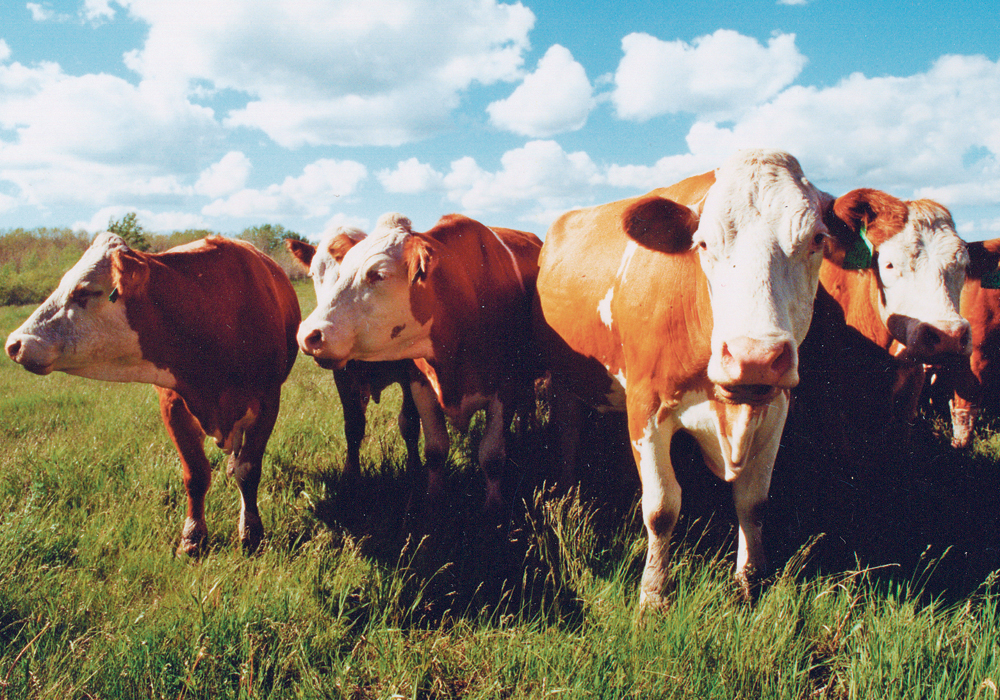Doug Wray assumed he had a Red Angus-Simmental cow herd on his Alberta ranch but DNA testing revealed an interesting mix.
Similar to the concept of ancestry.com where people can trace their ethnic heritage, DNA breed analysis of Wray’s commercial cows showed they were Angus, Simmental, Charolais, Limousin, Hereford and Gelbvieh. Included in the mix was a cow with a smattering of Galloway even though that breed has not been on the ranch for more than 10 years.
Wray tries to match cows to the appropriate bulls that produce calves capable of thriving in his intensive grazing program and produce quality beef.
Read Also

Trump’s tariffs take their toll on U.S. producers
U.S. farmers say Trump’s tariffs have been devastating for growers in that country.
He agreed to DNA testing and also adopted an intensive record-keeping system called HerdTrax.
He can record birthdates, breed of sire, identification of the mother, weaning and yearling weights, calving, performance of offspring, health treatments, carcass data and any other pertinent information.
Other stories in The 2017 Innovation Issue:
- Technology can help breed better cattle
- Biotech companies prospecting for microscopic gold mines
- Bee buzzes critical to calculating crop pollination
- Fungus could aid plant growth, reclaim oil sites
- Cracking the megapest genetic code
- Genetic mapping vs. genome sequencing
- French robot prowls the chicken coop so you don’t have to
- New laser technology proves successful for B.C. orchard
- High-tech deterrent devices protect crops from … intruding elephants?
- Diamondback moths focus of Cornell study
- VIDEO: Print your own parts?
- Bees may be serving up humanity’s next big food … and it isn’t honey
- Big doubts about big data
- The little plane that did
- Soil mapping soon to be more usable
- Managing fields could soon move to plant level
- GM pollen: it gets around
- Autonomous vehicles not on the radar for most farmers
- Farm wi-fi connectivity opens new world of possibilities
- Nanotechnology to alter animal health, food systems
- As big data comes to the farm, are policy makers keeping up?
- Farmers not rushing to grab digital tools: survey
- Connecting the DOTs
- Hands-free field test
- Researcher understands farmer doubts about hands-free farming
- The trouble with telematics
- Sensor sensibility
- The discovery that could shake up the beer industry
- Grow your own clothes
- Blockchain technology offers food safety, traceability and more
- Supercluster makes big innovation pitch
- Quicker, cheaper biofuel production in the works
- Alternatives to livestock antibiotics are difficult to assess
- A revolution is coming
The challenge is converting data into information.
“When you get in this game you really need someone who is number savvy and computer savvy and who likes to do it. That is probably our Achilles heel,” he said.
Scientists like John Basarab of Alberta Agriculture have been looking at beef genomics for a long time. The next step is to transfer what has been learned about purebreds into something useful for commercial producers.
Genomics can determine breed composition and new tools can also show where to make improvements. One area for improvement is hybrid vigour.
More strategic crossbreeding could produce calves with more vigour, something Basarab said is diminishing across North America.
“In the last 20 to30 years, we have seen a continual erosion of the amount of heterozygosity, hybrid vigour in the North American cow herd. We have moved from a systematic crossbreeding program now to nonsystematic crossbreeding where we really are not sure what that cow herd is from a breeding composition view,” he said.
Finding the right genetic mix is not clear cut.
If a purebred Hereford cow is bred to a purebred Angus there is a 50-50 split. If a Simmental bull is added, a three-way combination is created but the genetic makeup is not always clear.
DNA is not transferred evenly but moves in chunks.
It is expected a three-way cross cow would be 50-25-25 but the animal could end up being 50 percent Simmental, 15 percent Angus and 35 percent Hereford depending on how genetic recombination occurs.
Still, crossbreeding is a good way to produce greater hybrid vigour in animals, which affects how well they grow and thrive.
People also want to build a uniform herd, but that may not be happening.
“We go towards a more uniform cow herd and do get uniformity of type but mostly it is uniformity of colour,” he said. “Our herd has migrated over those 20 years to be a herd of red and black animals.”
This could affect sustainability and profitability of the western Canadian beef population.
In 1990, about 6,200 herds were surveyed in Alberta.
Included in the study was calf crop percentage. This is the number of calves weaned per 100 cows exposed to breeding. At that time, 84 percent of the calves survived to weaning. Subsequent studies showed no real improvement in calving percentages have been made.
“We are not doing anything about the fertility of our cow herd,” he said.
People often think they can check the pedigree to check background composition but the vast majority of commercial producers do not maintain pedigrees or records.
Knowing the breed composition with DNA tests can lead to better mating decisions when cross breeding to boost performance and fertility.
Fertility is more important than the other traits like carcass merit and growth because a calf needs to be born every year.
A two percent improvement in the calving rate means two extra calves out of a herd of 100. That means more income without getting more cows.
Survival to the second calving means the young female was not removed for a variety of reasons like bad attitude, poor body structure or failure to get pregnant.
Herds with lots of hybrid vigour tend to have a low culling rate.
“Over 30 years, nutrition technology has improved, vaccination, health and grazing management has all improved but we haven’t done a damn thing about our calving rate,” said Basarab.
Producers want vigorous cows but as herds grow larger, they cannot take on too much risk. They do not want to take on a new breed that could introduce vigour but may also cause calving difficulty that a large herd cannot cope with.
The right combination can make a cow herd more productive.
“These animals with more heterozygosity (hybrid vigour) have more resilience, they can handle changes in climate, changes in diet, changes in management and they stay in the herd longer,” he said.
A new tool to measure the genetic makeup and hybrid vigour is called EnVigour HX, offered by Delta Genomics. It can generate a hybrid vigour score to help producers develop a more strategic breeding plan. It does not recommend specific breeds.
Armed with this information, a producer can decide to use an Angus bull, for example, on the cows that have the least amount of Angus in their background to improve hybrid vigour.
Besides improved fertility, the cattle could become more feed efficient.
















